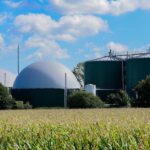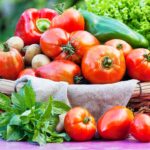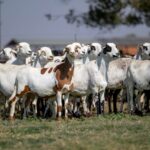For South African farmers, especially those engaged in livestock production, ensuring a consistent and high-quality feed supply is essential for animal health and productivity. One effective method of preserving feed is silage making, a fermentation process that allows farmers to store forage crops for use during lean periods. This article outlines the importance of silage making and provides practical advice on how to preserve nutrients effectively.
What is Silage?
Silage is fermented, high-moisture fodder made from various forage crops, including maize, sorghum, and grasses. The fermentation process occurs in anaerobic conditions, which helps preserve nutrients and extends the shelf life of the feed. Silage can be an excellent source of energy, protein, and other nutrients for livestock.
Benefits of Silage Making
- Nutrient Preservation: Silage preserves vital nutrients, including proteins and vitamins, which may otherwise degrade in traditional storage methods.
- Improved Feed Efficiency: By providing high-quality forage, silage can improve feed efficiency and overall livestock productivity.
- Reduced Waste: Silage making minimizes spoilage and waste associated with hay and other forage types, making it a more cost-effective option.
- Year-Round Availability: Silage allows farmers to maintain a consistent feed supply during dry seasons or when pasture is scarce.
Steps for Successful Silage Making
- Select the Right Crop: Choose high-yielding, nutritious forage crops suitable for silage production. Common options include maize, sorghum, and legumes. Ensure the chosen crop is well-suited to local soil and climatic conditions.
- Optimal Harvest Timing: Timing is critical in silage making. Harvest the forage when the moisture content is between 60% and 70%, typically at the boot to early grain formation stage. This moisture level is ideal for fermentation.
- Chop the Forage: Chop the harvested forage into small pieces (approximately 1-2 inches in length) to enhance packing density and facilitate fermentation. Smaller particles allow for better packing, reducing air pockets that can lead to spoilage.
- Pack Tightly: Ensure the chopped forage is packed tightly into silos, pits, or bags to eliminate air pockets. This anaerobic environment is crucial for the fermentation process. Use tractors or heavy machinery to compress the material as much as possible.
- Seal Properly: Cover the packed silage with plastic sheeting or a tarp to create a barrier against air and moisture. This sealing process is essential for anaerobic fermentation and prevents spoilage from exposure to oxygen.
- Monitor Fermentation: After sealing, allow the silage to ferment for at least 2 to 3 weeks. During this time, the forage will undergo anaerobic fermentation, producing lactic acid, which helps preserve nutrients and flavors.
- Test for Quality: Before feeding silage to your animals, conduct quality tests to assess nutrient content and fermentation success. Ideal silage should have a pleasant, sweet smell, indicating successful fermentation.
- Feed Management: When feeding silage to livestock, ensure it is well-mixed with other feed types for a balanced diet. Monitor livestock reactions to the silage, adjusting rations as necessary to prevent digestive issues.
- Storage Considerations: Store silage in a cool, dry place to maintain its quality. Avoid exposure to sunlight and moisture, which can lead to spoilage.
- Regular Evaluation: Continuously evaluate the quality of your silage throughout the feeding period. Look for signs of spoilage, such as mold or an off smell, and adjust feeding practices accordingly.
Silage making is a valuable skill for South African farmers looking to preserve nutrients and provide quality feed for their livestock. By following the steps outlined above, farmers can successfully produce silage that enhances animal health, improves productivity, and contributes to sustainable farming practices. Investing time and resources into effective silage making can yield significant returns in animal performance and overall farm profitability.
Join 'Farmers Mag' WhatsApp Channel
Get the latest Farming news and tips delivered straight to your WhatsApp
CLICK HERE TO JOIN






